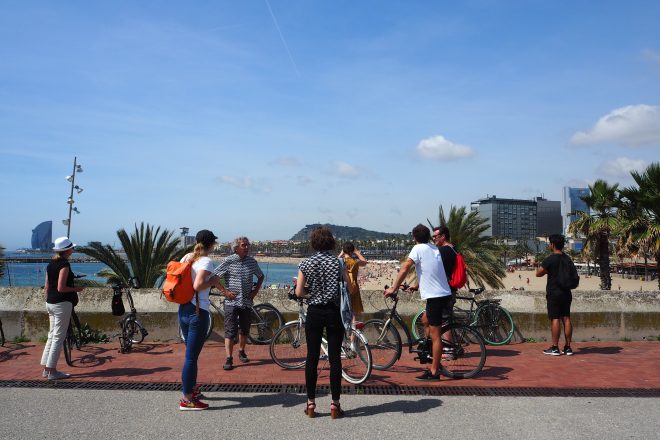
A good interpreter does more than just translate, they provide the tools to begin to understand in another language. Spending the day cycling around Barcelona with architect, urbanist and cycle tour guide Jaume Carne, it was the language of the city that was revealed. We began in the crush of the old city, tangled streets catching the morning light on the canyon facades. Arriving into the Mercat del Born, a market hall turned cultural centre, delivered us into the 19th century with a parasol of cast iron and glass that firmly situated the building in the industrialised 19th century, while its feet lingered in the revealed excavations of the medieval city. Cycling through the nearby Parc de la Ciutadella, artefacts from the military history of the site sat alongside follies and curiosities of a 19th century pleasure garden, with an outrageous fountain featuring waterfalls, dragons and charging guilt stallions rumoured to have been designed with the help of the young Antonio Gaudi.
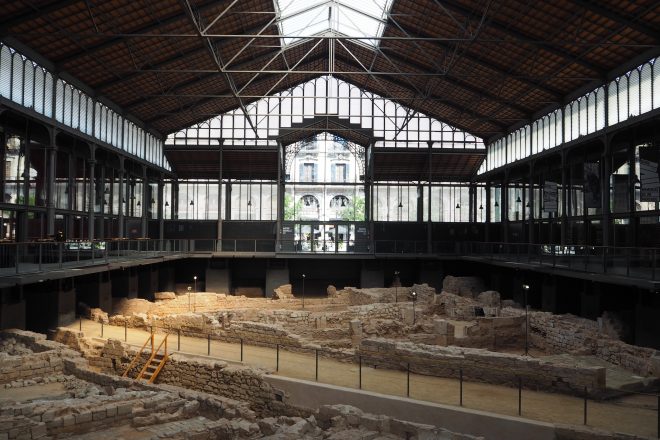
The story of this city will always find its way to the ocean and we next headed to the Olympic Village and waterfront promenade built for the 1992 Barcelona Olympics. In the lead up to the Olympic Games, Barcelona sought to shake off years of stagnation and re-imagine itself on the water. Beyond the highrise towers, Frank Gehry’s fish and the Olympic village, the real story of this period of the city’s history is the transformation of the waterfront that reconnected the city to the ocean. The train line and highway that cut off the city from the water were buried, industry relocated and kilometres of sand, promenade, parks and pathways installed in their place. There are kilometres of promenade now, and moving through the city on a bicycle creates a continuity of experience, allowing the narrative of a place to unfold seamlessly. Jaume was able to punctuate this experience, delineating an invisible line between the 1992 works, and the extension of the promenade which terminates at the Fòrum, developed in 2004 for the Barcelona Universal Forum of Cultures.
The Fòrum area is a strange part of the city, the regularity and density of the city dissolves in a loose collection of oversized structures and spaces: a monumental canopy, an artificial beach and a lumpy blue wedge of a building by Herzog & de Meuron. The area felt like a zoological exposition of exotic animals, the forms and scale, so unfamiliar as to be a curiosity in it’s own right, one couldn’t help but feel that the structures lacked the correct context to be legible in the city. Jaume explained that the whole site is built over the site of a functioning sewerage plant, which illuminated the context, but failed to make the spaces any less strange.
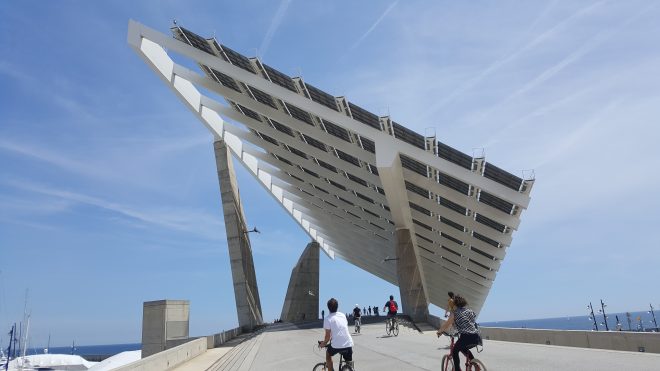
As we returned back into the heart of the city, we followed the Avinguda Diagonal, a monumental avenue that forms a fundamental axis of the Cerda plan, which marches through the heart of Barcelona with an aggressive geometry. Cast at 45 degrees to the 100m square grid of city blocks, The Avinguda Diagonal forces a geometric disruption with curious corner wedges, parks and plazas negotiating these orthogonal left-overs. And then we encounter Gaudi. The Sagrada Familia which occupies so much of the urban consciousness of Barcelona is characterised by our guide as a problem child for the city. We move quickly past this century old construction site turned tourist Mecca to safer ground with Casa Milà and Casa Batilló. Two grand villas that wobble against the regimented facades of these grand city blocks. A riot of loose lines that shout out to the outrageous steel contours of Miralles Tagliabue’s Parc Diagonal Mar we had seen earlier in the day.
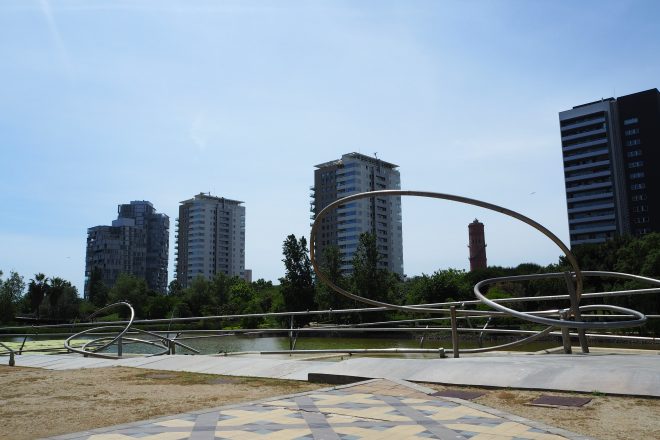
Indeed, transecting the city on the ride home, allowed the language of the city to move from single motifs into fully formed complex narratives. We could see how the rhythm of Cerda blocks occupied the unbuilt space that had been preserved around the old city, defined by the geometry of the firing range of a cannon from the Parc de Ciutadella. How the winding tangle of the old city starts and stops so abruptly, terminated by city walls and ocean. The bicycles mimicked the pace and rhythm of these stories, the long straight transepts, the odd detour through a corner park and finally the slow dodging and weaving through the old city streets, crowded by people, tightly packed buildings and punctuated by the wobbles of cobbled streets.
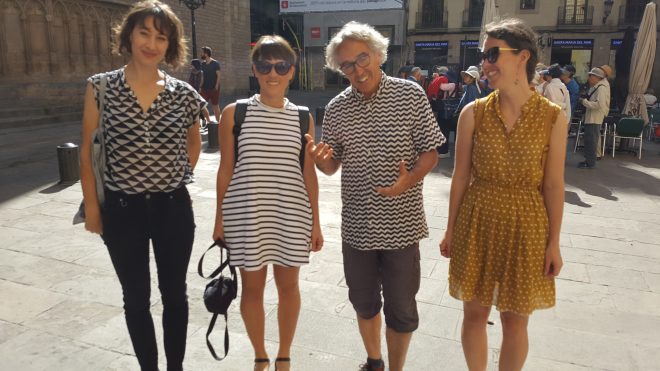
– Imogene Tudor
Follow #2017DuluxStudyTour